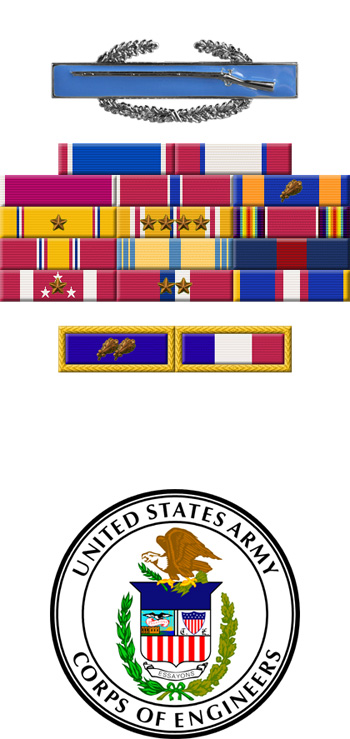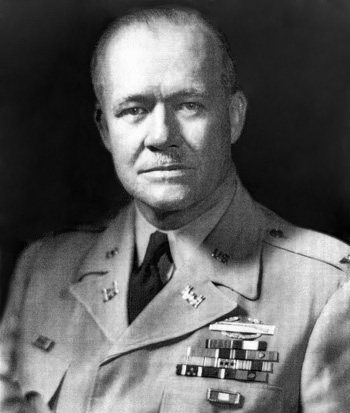
|
Wendell W. Fertig |
 |
|||
| Rank, Service | ||||
Colonel O-6, U.S. Army |
||||
| Veteran of: | ||||
|
||||
| Tribute: | ||||
Wendell Fertig was born on December 16, 1900, in La Junta, Colorado. He was commissioned a 2d Lt of Engineers in the U.S. Army Reserve through the Army ROTC program at the Colorado School of Mines on July 23, 1928, and worked as a civil engineer in the Philippines from 1936 until he was called to active duty with the U.S. Army there on June 1, 1941. Col Fertig served as Assistant Engineer of the Bataan Field Area, Engineer of the North Luzon Area, and then as Chief of the Construction Section with General Headquarters before the Japanese invaded the Philippines in December 1941. He was with the Army forces during the retreat to Bataan and Corregidor, and then went to Mindanao in late April 1942 to help demolition of main roads and bridges. When American forces surrendered in May 1942, Col Fertig decided to stay and wage guerrilla warfare against the Japanese forces from Mindanao. Gen MacArthur officially made him Commanding Officer of the 10th Military District on Mindanao in February 1943, after discovering he was running the guerrilla operations on the island. During this time, he also created and commanded the United States Forces in the Philippines, which recruited escaped POWs and other soldiers and American civilians who had refused to surrender to the Japanese. After the American forces landed on Mindanao in April 1945, Col Fertig served with X Corps from June to July 1945, and then with Headquarters Southwest Pacific Area from July 1945 to January 1946. He then served as the Consultant on Guerrilla Affairs with the U.S. High Command in the Philippine Islands from January to April 1946. Col Fertig returned to the U.S. for the first time in 10 years in April 1946, and was then a patient at Letterman General Hospital in San Francisco, California, and Fitzsimons General Hospital in Denver, Colorado, from April 1946 to February 1947. His next assignment was as commander of the Army ROTC detachment at the Colorado School of Mines in Golden, Colorado, from February 1947 to July 1951, followed by service as a Special Forces Plans Officer in the Office of the Chief of Psychological Warfare with Headquarters U.S. Army in Washington, D.C., from July 1951 to June 1952. He next served as Deputy Chief of Psychological Warfare from June 1952 to August 1953, and during this time helped establish the Army's Psychological Warfare Center at Fort Bragg, North Carolina, which later became the John F. Kennedy Special Warfare Center and School. Col Fertig's final assignment was running various clandestine operations out of the Pentagon from August 1953 until his retirement from the Army on February 1, 1956. After his retirement from the Army, he ran a mining company in Colorado until his death on March 24, 1975. |
||||
|
||||

